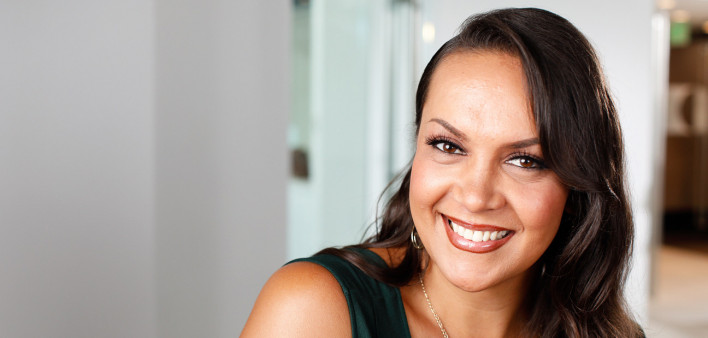Conscious decisions. When it comes to managing both her HIV and her mental health, those two simple words guide the wellness journey of Keiva Lei Cadena, 46, director of harm reduction services at Kumukahi Health & Wellness in Hawaii. “That’s my mantra!” declares the exuberant Cadena, who was diagnosed with HIV in 2004.
That year, she remembers, was not a good one. She felt sick all the time and had had pneumonia the two prior winters. Finally, a friend, an HIV outreach worker in San Francisco—where Cadena, a native Hawaiian, grew up and was living at the time—flat-out told her she needed to get tested for HIV.
Cadena says that like many transgender women in San Francisco at that time, she’d avoided getting tested for the virus because it was associated with gay men. “We wanted to be identified in our own image,” she says. But it wasn’t just that. “Not one medical provider,” she adds, “had ever told me they thought I needed to be tested for HIV.”
So Cadena got tested. But after she tested positive, her life only got worse. She did not start HIV treatment right away, as is common now, but continued doing sex work up and down the California coast and developed an addiction to crystal meth. In 2006, she was hospitalized with MRSA, a difficult-to-treat staph infection.
“I was quarantined for two weeks,” she recalls, “and an HIV doctor said to me, ‘You can start taking HIV meds or you can die.’” Her CD4 cells were down to a precarious 120, and her viral load was raging. So she started meds—and became undetectable within a few months.
But Cadena did not stop what she calls her reckless behavior. “Drugs numbed my pain but also fueled horrible thoughts about myself,” she says. A 2010 suicide attempt landed her in a psychiatric hospital, which is where her wellness journey really began. When she left, she started attending 12-step recovery meetings.
But the lifestyle change wasn’t easy. “I’ve seen other trans girls not be able to get sober because the bars and clubs are our safe place,” she says. “I was a showgirl who did drag revues and hair and makeup. All my closest friends were performers, dancers and costume designers. I had to remove myself from that world and immerse myself into 12-step meetings.”
But she stuck with it and recently celebrated a decade sober, although she rarely attends meetings these days. In the past decade, she has also become an HIV advocate, going from a receptionist in early sobriety at an HIV agency to a patient navigator who walks people through the aftermath of the very diagnosis she received years ago.
“I realized that doing this work was my living amends,” she says. “It’s a huge reason why I’ve kept on doing it, because I was one of those people who didn’t have a navigator and fell through the cracks.”
Her experience living with HIV has helped her help others living with the virus in countless ways. Her knowledge includes understanding treatment options and their benefits and side effects, such as weight gain and other conditions. She knows all too well that addressing comorbidities is key.
But her past decade of sobriety and well-managed HIV hasn’t been perfect. “I had a lot of bouts of severe depression, weight loss and loss of appetite,” she says. It got so bad in 2017 that her boss intervened, which led to her going into therapy.
“I needed to vomit up a lot of stuff from my past,” she says. “About being trans, being HIV positive, being abandoned as a teenager. I thought I was hiding all these feelings and fears, but I wasn’t. I was lucky I had so many close friends in recovery and living with HIV who knew my story and told me to get into action.”
Since then, she says, she’s learned that “you have to make conscious decisions every day when it comes to mental health—sometimes as simple as deciding to get out of bed.” Recently, everyone who had been living in her house—her father (with whom she’d reunited), her partner, her kids and her dog—moved out. “I went from all that to no one,” she says. “So I consciously decided to make this a home just for me, and I redecorated during COVID, which was a huge piece of wellness for me.”
That redesign included “a cultural corner where I could put spiritual things.” As a native Hawaiian, her spiritual life is tied to once again living in the place of her ancestors, she says. That includes twice-weekly hula classes. “People think it’s just dancing, but it’s also ceremonial. I learned the purpose behind those prayers and dances.”
She’s also busy working as an HIV activist and is currently part of a statewide coalition to get Hawaii to better enforce its laws requiring health plans to cover transgender-affirming care.
Another conscious decision she makes every day? “To live in gratitude 100% of the time,” she says. “I’m in a better place, and if I don’t make good choices, I’m backing out on all the gifts and all the wins.”







1 Comment
1 Comment